Contents
Introduction
When Samsung announced their top-end camera NX1 in September 2014 it gained much attention, much more than the other cameras and lenses before. Samsung took all their knowledge and implemented some unique features into this new body:
- First 28-Megapixel back-side illuminated APS-C sensor with improved dynamic range and high ISO capabilities
- 15 frames per second maximum shooting speed at full resolution with continuous AF
- 4K video recording and storage using the H.265 codec
I got this camera (and the Samsung 16-50mm F2-2.8 S lens) for a month and used it in varying scenarios to evaluate the new capabilities. I’ll focus on the photography related functions and compare it with my Samsung NX30 and Phillip Reeve’s Sony A7.
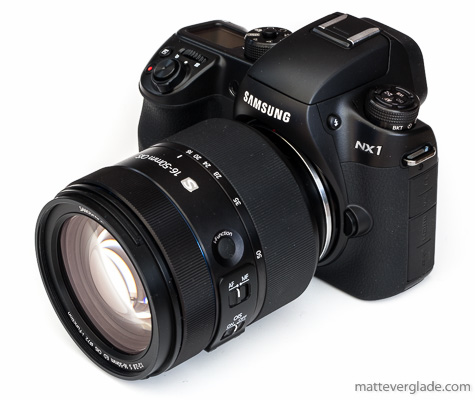
For our German readers: Eine kürzere deutsche Version des Artikels wurde vom Systemkamera-Blog veröffentlicht.
Unboxing / First impression
The camera arrived in a sturdy and heavy box, which included – apart from the camera – the following things:
- Samsung BP1900 (1860 mAh battery)
This is a newly developed battery which was not used by any Samsung camera before. It’s quite durable and lasts significantly longer than the battery of the NX30. - USB charger and an USB 2.0 cable
There was no separate battery charger included, which means you need to charge the camera via USB. - Strap
This is the same as delivered with the NX30. It’s sturdy, but for me it’s too big and inflexible. I continue to use the one from the NX20. 😉 - Adobe Photoshop Lightroom 5
You need the CD for the serial key only, which is printed on the cover. Simply download the most current 5.x version of Lightroom from adobe.com as you need to upgrade Lightroom to version 5.7 to be able to read the RAW files from the NX1. - Bumf (quick start guide, warranty documents and product information)
The full manual has to be downloaded from the Samsung homepage and is not included in printed form. If you ask nicely Samsung might send a printed copy to you.
My first impression was controlled by the size and weight of the camera. Including the battery the NX1 weighs 640 grams, which are about 200 grams more than the NX30 weighs. Apart from this aspect I quickly got comfortable with the camera. The handling of the body is similar to the NX30 and previous NX users will appreciate that the look and feel of the software-side user interface hasn’t changed much.
Directly after unboxing I updated the firmware of the camera body and several lenses. There have been many firmware updates for the NX1 with additional functionality and bug fixes. Make sure to update the camera before configuring it, because after firmware updates the settings are set to default values. You can check my firmware pages for the most current versions for your camera and lenses.
Build quality
Samsung claims the body is made of magnesium alloy which is a step forward from the NX30 body made of plastic. The body feels quite solid and ruggedly constructed. The buttons and especially the wheels fell a bit plasticy and cheap. That doesn’t fit together, but I don’t think you’ll get a problem with them. In daily use you won’t notice a big difference to the NX30 though. The tilting display is solidly connected to the body. Overall there is not much to complain about.
The body is weather-sealed and we used the body together with the Samsung 16-50mm F2-2.8 S lens in light rain without any problem. I would use the body in light rain without any concerns. It seems that Samsung did a good job here. Nevertheless this doesn’t really help with the non-weather-sealed lenses (all lenses except the S lenses).
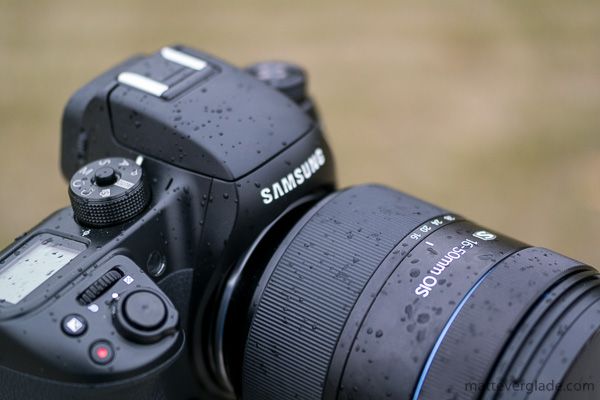
Ergonomics & Handling
As said before the camera is similar to the NX30 and I quickly got comfortable with the camera in my hand. The hand grip has the right size for average sized hands and there are notches at the right places. It really helps to hold the camera steady and safe. Most buttons are placed at good positions, but there are also some buttons where the placement is quite odd.
- The AF/ISO/WB buttons were moved from the right dial to the top left dial. I need to use my left hand to press them, which is normally holding the lens. Especially with bigger lenses this results in high pressure on the cameras lens mount. Thankfully it is possible to set the functions to other buttons on the camera.
- The AEL button is placed placed on the top right position. Pushing that button is normally made using the right thumb, but when I am doing that I loose some grip and with bigger lenses the camera doesn’t feel safe in my hands anymore.
- The exposure compensation button moved again. For me this is one of the most used buttons and it doesn’t feel comfortable to press it. I’d prefer it where the AF ON button is located, which I seldom use.
Having three wheels allows to easily adjust shutter speed, aperture and ISO quickly, which is really nice and allows me to use the i-Function button for something different, but I would like to get more options to customise which wheel to use for which setting. This is also the case for the EVF button (to switch between EVF, display or automatic detection) with the Mobile button. The EVF button needs to be pressed with the left hand, but I’d like to press it with the right hand to leave my left hand at the lens. Sadly I can only switch the Mobile and the Video recording button. Nevertheless I am very happy to have an EVF button to switch between display and EVF. With the NX30 I am often having problems with the EVF not detecting me using it (due to my glasses?) and sometimes it just detects my belly or my fingers near the EVF.
The mode dial can be locked. I am not sure what I would need this for as the dial doesn’t move too easily and the other dials are not lockable. Especially the diopter adjustment wheel can be rotated quite easily. Samsung should have either added a method to lock the wheel or hide it like on the NX30.
The On/Off switch can be easily rotated. That’s mainly good, but sometimes the camera turned on when I dropped it in my backpack. That can be annoying when you have a lens that expands when powered on (e.g. Samsung 16-50mm f3.5-5.6 PZ), but normally it shouldn’t be a big deal due to a good power management.
The shutter button is placed on top of the On/Off switch. It has a good pressure point for focussing (comparable to the NX30; worse with the A7) and is quite soft when pressed completely. At first this felt a bit awkward, but you get used to it.
The body features a microphone and a headphone jack. Below them there is also the USB 3.0 and HDMI port. It’s nice that there are two flaps for protection which can be opened separately. Unfortunately I found it quite fiddly to connect the USB 2.0 cable to the USB 3.0 port. That’s not really a problem Samsung is responsible for, but why wasn’t a USB 3.0 cable included?
Despite those points mentioned above I am overall happy with the ergonomics and handling of the camera.
Display & EVF
The display is a tilting screen only, not a swivelling screen as with the NX30. That’s mostly a deal-breaker for me. Especially when working on a tripod or taking images in portrait orientation I felt uncomfortable using the NX1. Nevertheless the display is very good. Sharpness is good and the touchscreen reacts very fast to user interactions. The colours are a bit too punchy, the RAW files are more flat than the preview you see on the screen. Compared to the Sony A7 you have much more space on the screen for showing the actual image. On Samsung cameras it uses the whole screen to show the image, on the A7 display you have black bars which make the image quite small.
The EVF left a very positive impression on me. I would actually say it’s the best EVF I have used so far – near to an OVF. The refresh rate is very high (no flickering or aliasing at all) and I can’t see any delay. In low-light situations the refresh rate is better than on the NX30, but the image quality is worse due to noise. Compared to the NX30 the viewfinder is slightly bigger and can be used much better with glasses. I am missing the tiltable EVF found in the NX30, of course. 😉
On the top of the body Samsung introduced a new display that shows the main settings of the camera, like exposure, shutter speed, remaining shots, battery life etc. I haven’t used this very often, but can think of situations where it might be helpful.
Shutter
There is an option for an first-curtain e-shutter, which slightly improves shutter response time and the mechanical influence of the shutter (vibration, sound). Sadly the e-shutter is only available for native lenses and not for legacy lenses.
The shutter sound is pleasant and not very loud. In comparison to the NX30 it is less distracting, quieter and just sounds good. The shutter of the Sony A7 was really load and ugly compared to the NX1. I preferred to use the NX1 in a quiet church as the sound was not too distracting. Sadly there is no silent shutter mode like on some other cameras.
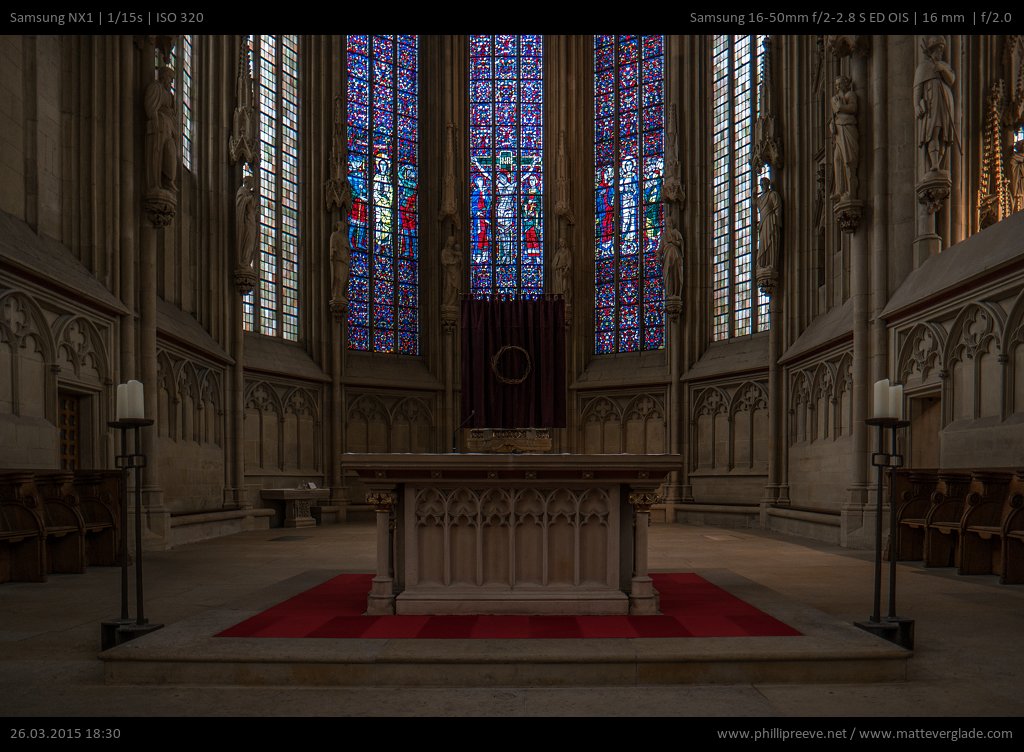
I noticed a rather long shutter blackout (display stays black) after the image has been exposed . It is about as long as with the Samsung NX30 and Sony A7.
Image Quality
High ISO
At first sight the high ISO capabilities haven’t changed by much compared to the (already quite good) NX30. The amount of noise hasn’t changed by much, but what has changed is the “type” of noise. It looks different than the noise on the NX30, maybe more like the noise on old film cameras. And for some reason Lightroom can reduce the noise more effectively as on the NX30. It seems there is about 1/3 stops improvement, but depending on the noise reduction, the final image might look cleaner. I set the Auto ISO Range to ISO 6400 on the NX1 (NX30: 3200).
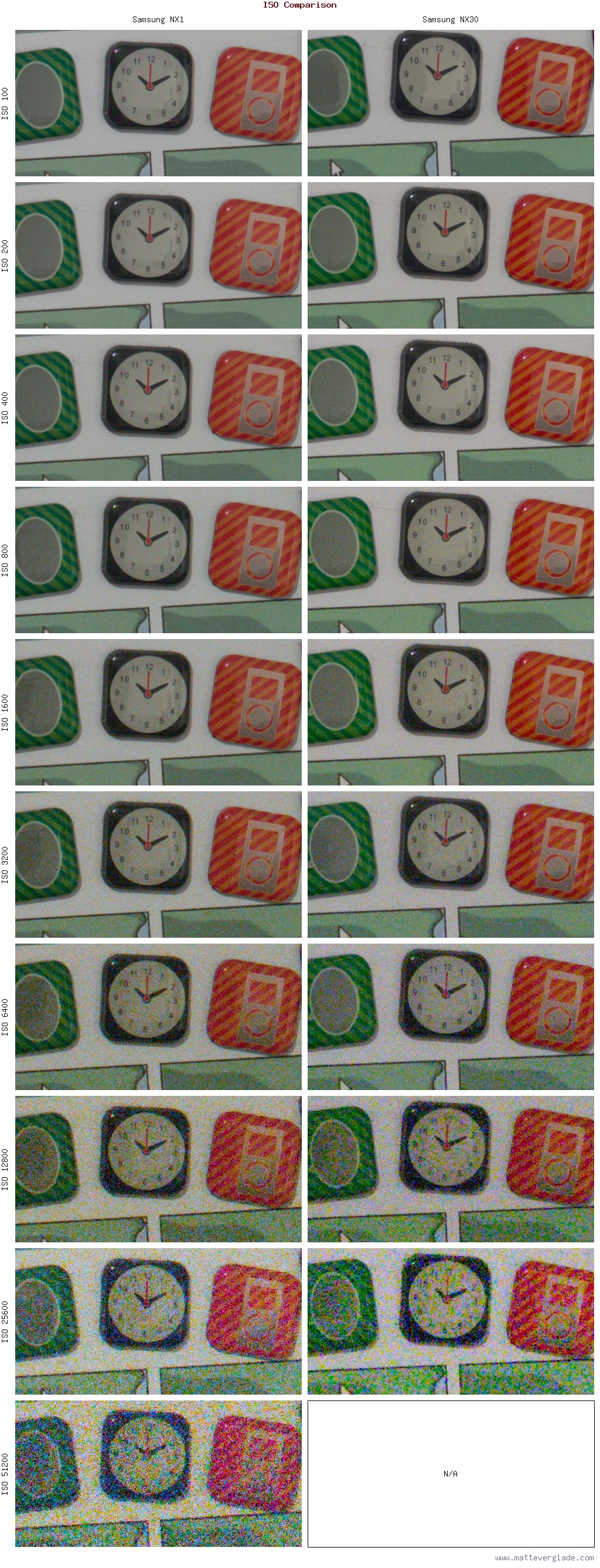
Dynamic Range
We compared the dynamic range with the fullframe Sony A7 and I am quite surprised by the results. The BSI sensor is nearly on par with the fullframe sensor. I would say it is about one stop improvement compared to the NX30. As always with Samsung sensors the reserves are hidden in the shadows. You can push them much more than the highlights. Therefore it can be useful to underexpose images when there is a high dynamic range to be captured. According to dynamic range I would say the sensor is the best APS-C sized sensor out there at the moment.
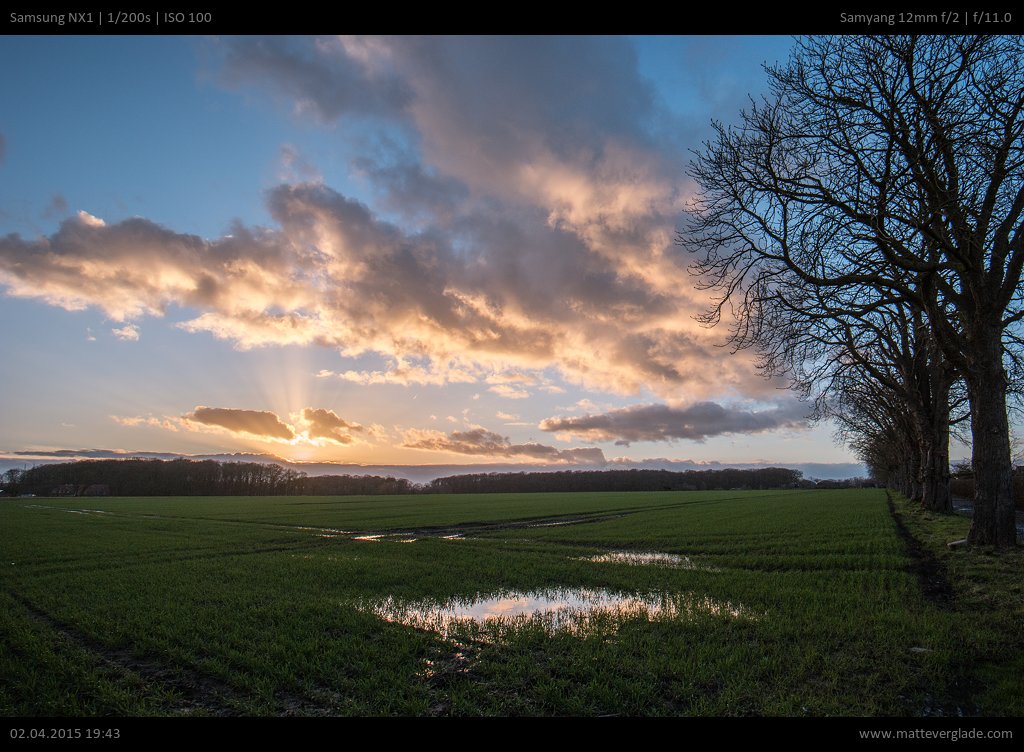
Focus
Auto Focus
The auto focus is a double-edged sword. In good light it focuses lightning fast and reliably. With the Samsung 16-50mm F2-2.8 S you get the focus near to instantly. Please note that the AF speed is restricted by the used lens. There are some slower lenses in the NX line up. Check my reviews of the lenses for more information. Sadly this behaviour changes drastically in low light situations. The AF sometimes struggles to lock the focus and in the successful cases it is often quite slow. Even in moderate situations the AF can struggle from time to time. For an example see the video below:
Surprisingly the NX30 had no problems in some situations where the NX1 struggled. In some cases it was even faster. There must be something wrong in the firmware as they already have a better AF implemented in the NX30. We had contact with Samsung engineers and provided sample videos and hopefully this helps them to fix this for the next firmware update.
Unlike with the AF speed I was quite impressed by the tracking functionality. We actually needed some time to get used to it and tried different settings to optimise the results. In the end we shot several tracking series with CAF and Tracking activated in different situations (animals, persons walking, bike riders) and seldom had a miss. Most of the images were in focus at 15fps! Sometimes we had the problem that the person was in focus somewhere, but not exactly the eyes. Buffer for RAWs could be a bit larger as it already slows down after about 21 shots. Yet I am satisfied with the overall performance.
Manual Focus
Manual focus with Samsung lenses is implemented well. You can use focus peaking and/or a focus loupe to set the focus correctly. The loupe enlarges the image (5x or 8x) where the AF point has been set previously. Additionally, after auto focus, you can override the focus by rotating the focus ring on the attached lens. This is called DMF (Direct manual focus) and can be enabled in the menu.
Using legacy lenses the manual focussing process is not as good as with native NX lenses. You have the previously mentioned manual focus aid systems, but the focus loupe only opens in the center of the image and there is no way to pan it. DMF is not available for legacy lenses, of course.
Software / Firmware
The firmware has been improved a lot in comparison to the NX30. There are so many new things to discover. To keep it short, I’ll just list some them below:
- In playback mode an option has been added to convert RAW files to JPEG directly. Unfortunately only for one file at a time. Would be nice if Samsung could give an option to select multiple files for conversion.
- AF Release Priority can be configured (mostly speed, release or focus priority).
- You can now enable that the camera stores the last selection AF position. In previous cameras the set AF point was always reset.
- The options for autobracketing have been extended.
- There are many options for the key mapping, but there could be more. Some key can be only swapped (e.g. Mobile/Record), some keys have the options limited to their original purpose (e.g. AF ON), some options are simply missing (e.g. quick access to switch focus peaking on or off). I found it quite nice that you can gain quick access to the key mapping menu by pressing the Fn button and the Delete button in a row.
- When using Auto ISO the calculated ISO value is shown immediately. On the NX30 it was only shown after pressing the shutter button half.
- Finally it is possible zoom and pan in quick view (image preview after the exposure). Simply select the Hold + Focus Zoom setting. The latter will show you the full image for short time after the exposure until it zooms in to the area where the focus point has been set before.
- Exposure compensation can be adjusted in M mode with ISO set to auto.
- A center marker can be added via the settings menu.
- After a long exposure there is a countdown for the Processing message. 😉
- Samsung added some interesting shooting modes (Samsung Auto
Shot) to capture different kinds of fast movement/sport. You can choose between Baseball, Jump Shot, or Trap Shot. Baseball will capture a photo when a ball has reached the hitter (or technically a predefined line). Trap shot works similar, but every movement into a predefined direction towards a line is captured. Jump Shot tries to capture the image in the moment when the jumping folks are at their peak of the jump. I played around with the Trap Shot and tried to capture birds in the wild and volleyball players. It works most of the time, but not always. Sometimes the area of movement was too small. Nevertheless this function can be quite handy and it’s a nice to have. See an (anonymised) example below.

I probably haven’t found and listed every interesting feature so far as there are so many settings in the nested menus.
Video
Personally I really like the possibility to use 120fps slow-motion videos (see example below). The highly promoted 4K functionality doesn’t help me as nobody I know has a TV to watch those high resolution videos. Nevertheless this feature could be useful for photography as an easy solution for action photography of any kind. The single frames could be grabbed from the frame instead of taking separate photos. The quality for smaller prints is more than enough.
Unfortunately I am primarily interested in photography and my knowledge about videography is quite limited. Therefore I won’t test the video related features Samsung has added to the camera. There are really good people out there with much more expertise in this regard than me, so I added a (commented) list of reviews. Note that most of the reviews on the web are partially outdated as they refer to cameras with an older firmware. Samsung has added many new features (e.g. the often mentioned log picture profiles) and improvements for the video mode in firmware 1.20.
- DPReview
Mostly photography related review, but also has an up-to-date chapter about video. - HDVideoPro
Short review which also discusses some of the features introduced in firmware version 1.20. - EOSHD
Good in-depth review from a well known videographer. Actually the review is based on an older firmware and is not completely up-to-date anymore, keep this in mind. They also made a short-film in Lisbon using the NX1 and give some insights into the filming process. Additionally they compared the image quality of the Canon C300 with the Samsung NX1.
Finally I would like to mention one small weirdness that occurred during testing. Using SD cards with a capacity of 32GB or lower the maximum length of 4K videos was around seven minutes. Using a 64GB card the maximum length extended to 30 minutes, which is the normal limit due to European taxation. After some research I found out that the problem is based on different file systems used for the SD cards. 64 GB cards are formatted using exFat, cards with less storage are formatted using FAT32. The problem with FAT32 is that it only allows files with a maximum filesize of 4GB and after 7 minutes of 4K filming the video file is simply exceeding the 4 GB limit. The solution is simple: Format your SD card with exFat (tutorials can be found on the web) and afterwards you can use all your free space for a single video file.
Connectivity
Well, in theory this sounds quite good. Bluetooth shutter release, Remote Viewfinder, quick transfer for taken images etc. In practice it simply doesn’t work for me. First I had to find out that I can’t use the app I already use for the NX30 and NX1000. Samsung released a new app for the NX1 (for Android; for iOS). On Android (I am using an HTC One SV) this app installs two additional apps from the Samsung App Store which leads to three apps with a summed files size over 150 MB. I tried it several times to install the apps and use them properly, but unfortunately I could only establish a connection for two times using manual mode. All other attempts (about 15?) failed. Sometimes I end up in an endless loop where the app wants to install the already installed Samsung Camera Manager, sometimes it tries to connect endlessly, sometimes something different happens. To keep it short: It is unusable for me and I am really not happy about it!
By the way, Samsung removed several functions that were available on the NX30, like the Flickr, YouTube, Dropbox or Facebook upload. I couldn’t find the Baby Monitor, too. 😉 Nevertheless, sending e-mails is working with the NX1, but there is also a drawback. Before you can send an e-mail you need to agree that Samsung sends (anonymous) usage statistics to their headquarters. There is no way around it.
Conclusion
I really liked to work with the camera. Overall it is an fascinating peace of hardware. The new sensor is leading in it’s class, the EVF is a good step forward and 15 fps with tracking are unique so far for this price. Sadly the AF in low light needs to be improved. It’s a major drawback which can drop sales a lot, but hopefully Samsung improved this in a future firmware update. Handling is very good, the camera feels good in the hand and the diversity of buttons and wheels are good to have and mostly well placed. Additionally Samsung added useful features to the firmware which makes the every day work much easier than before. Connectivity features were not stable so far and all those different apps are confusing and frustrating. The body is well balanced with the big lenses, but could be a bit smaller and lighter. This looks more like a DSLR than what we expect from a mirrorless camera.
Personally I have three major problems with the camera. I prefer a swivelling screen, AF in low light should be improved and support for legacy lenses needs to be improved. Despite that it is a universal and mostly class leading camera.
At the moment I would recommend the NX1 to those people who need a fully featured photo and video camera, but can handle with the improvable AF in lowlight and the mostly missing support for legacy lenses.
| Positive | Neutral | Negative |
|---|---|---|
|
|
|
Closing remarks
I am publishing this content in my free-time and have several expenses (hosting, buying gear, …) to cover. If you like what you are reading please consider to support my work. If you decide to buy the mentioned product, please use one of the affiliate links below. This is free of charge for you, but I’ll earn a small commission. This supports my work and any support is highly appreciated by me! Just select one of the stores to buy the Samsung NX1 (or other things):
Amazon DE | Amazon UK
| ebay DE | ebay UK | ebay US
More stores/countries can be found on the “How to support me” page. Thank you!

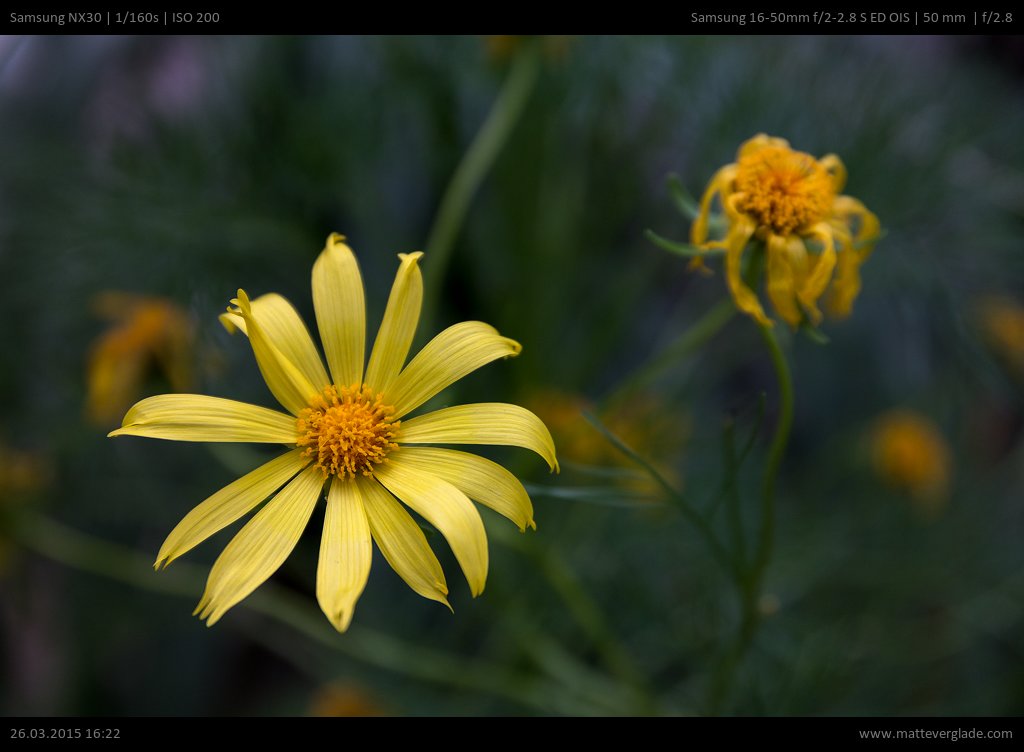
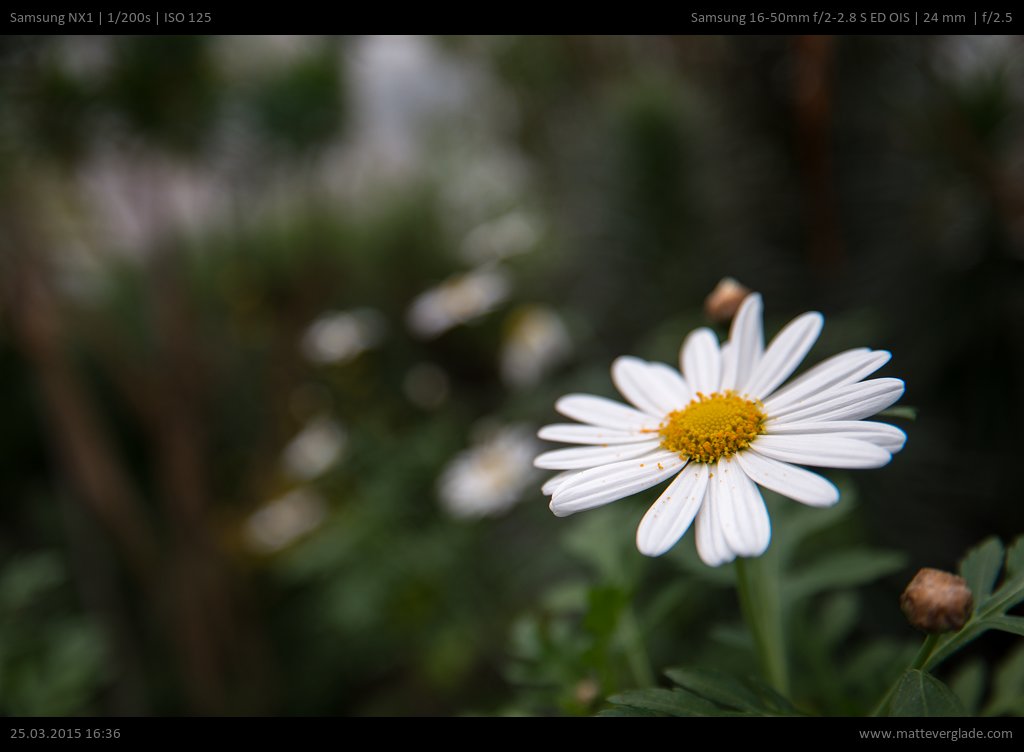
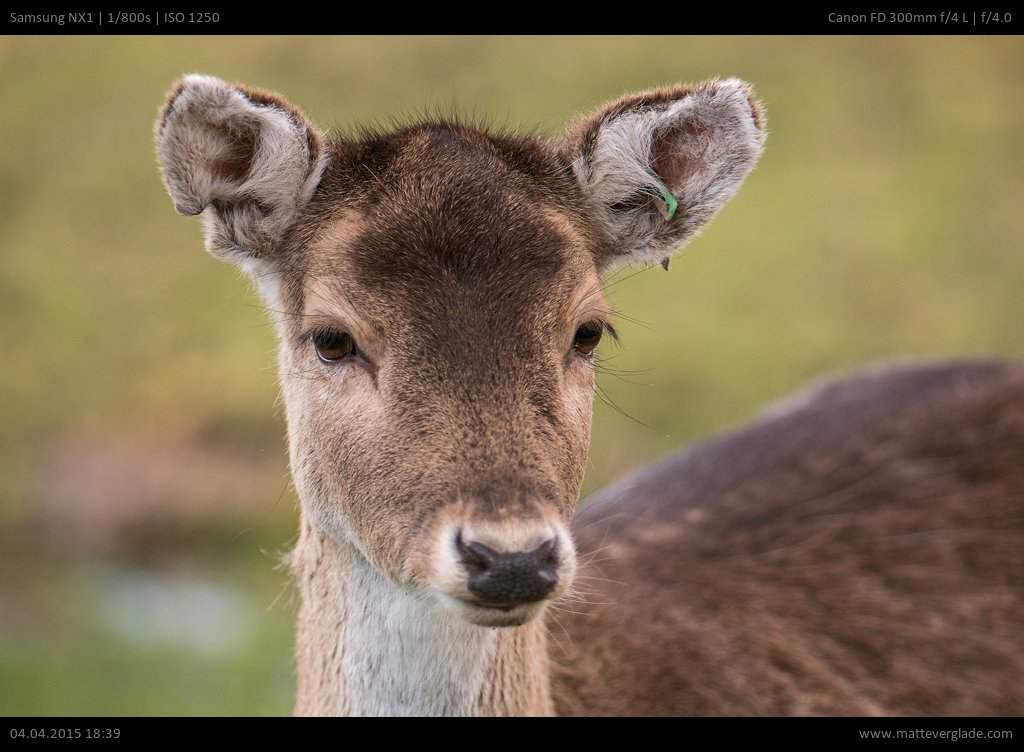
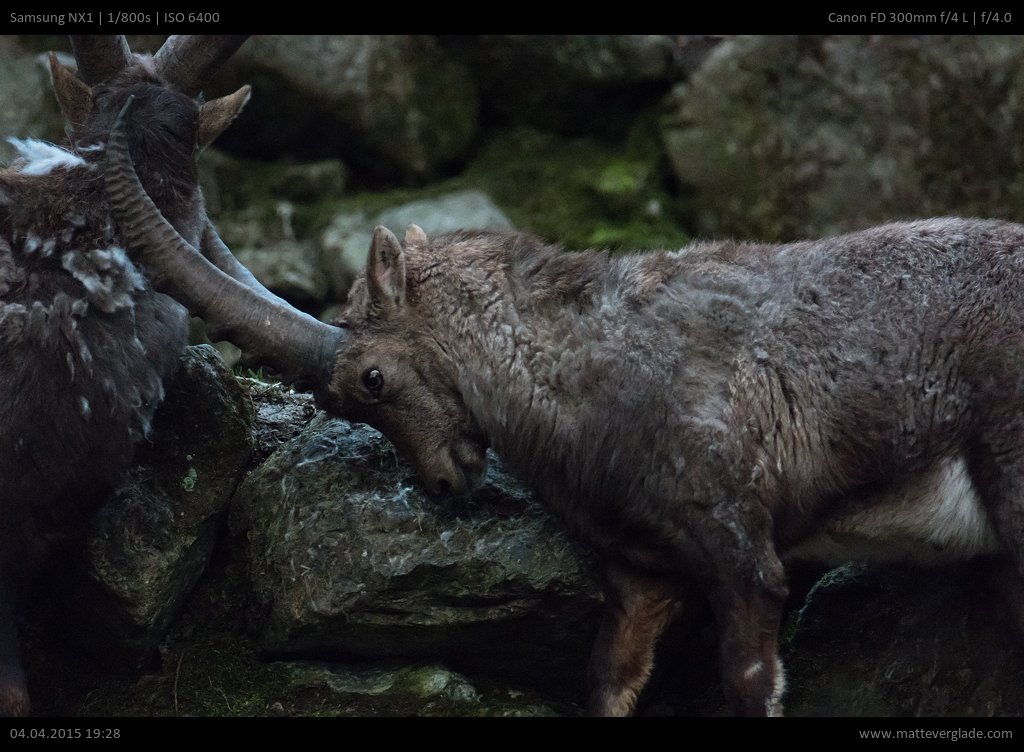

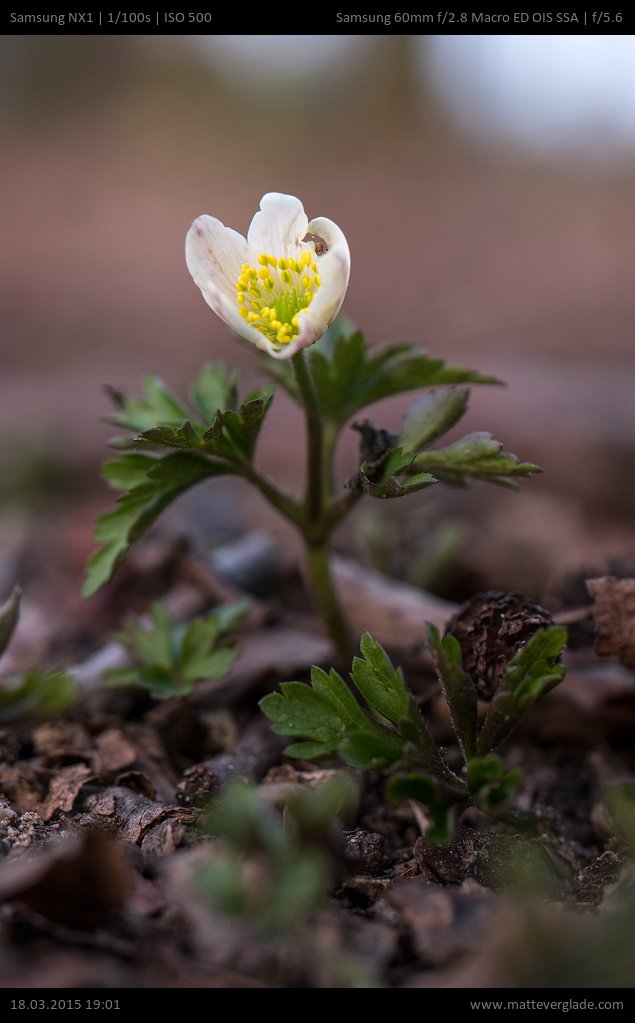
You wrote a very nice and lucid review.
I too am using an NX1 (along side some Nikon gear) and essentially agree with all of your findings. Certainly the ability to update software over WiFi is quite nice.
I’d like to see, with respect to adding a moveable loupe to the MF assist, having a split screen ala the D810; this would be very useful for a tilt/shift lens. (The Canon TSE work well but are a little awkward to use.)
Presently, the custom set-up is unnecessarily difficult. A faster, simpler method would remove the requirement to take a photo in addition to the descriptive name. The descriptive name is sufficient. Next, even faster would be to display a list of current names to select to overwrite or modify, rather than having to completely type each time.
But overall, the camera is very enjoyable to use and as you said, the image quality of this APS-C sensor is superb.
Thank you RJ, glad you liked the review.
Never heard of that split screen option on the D810. There is no T/S lens for NX so far, but what would the split screen help with?
I agree with you that Samsung can improve the handling of custom modes and settings. It’s also a pain that a firmware upgrade resets the settings.
Great review Matt,
I’ve been researching this camera for a good 3 months now and I don’t understand why more people don’t adopt the system. I guess the big thing is the lack of 3rd party lenses. I’ve decided to pull the trigger and buy one myself. I’m just a amateur/enthusiast, but I would like to go semi-pro eventually. Do you feel that the Samsung NX-1 is good enough for that? At the moment low light isn’t a huge concern as most of my shots are done during golden hour and with plenty of light. But how well can this NX1 handle indoor wedding receptions? Any input is appreciated.
Thanks
If you are not looking for the best AF around then the camera is suitable. DSLR have a better AF for sports and similar stuff, but in most other regards the Samsung is equally good or better, especially considering the price.
Indoor weddings might be a problem due to the AF system, but you need to check that yourself. Some can work with it, some can’t. Just get used to it and I am sure you’ll get good results. 🙂
I dont’t have a problem with 3rd party lenses, because I have everything I need in the NX lineup. If you don’t miss anything – where’s the problem? 😉
You bring very valid points. I’ve since received my NX1 and I’m loving it. I haven’t had too much trouble in dim light settings and that may be due to the most recent firmware update (1.3). I’m coming from an NX300 and I haven’t really experienced other cameras, but the experience is night and day. I’m thinking about getting the NX500 as a travel camera and using the NX1 for the events I shoot. Thanks again and I enjoy your reviews!
Hello Matt.
I follow you on flickr. Your photos are perfect.
I’m using an entry-level Samsung NX(NX3000). I’m thinking of buying a new camera in the next 2-3 months. I researched a lot. For days. I found the body and features Samsung nx1 very successful. He attracted me. but, the number of Samsung’s premium lens makes me think.(as everyone). Do you have any information about the new production of lenses? This is the only problem that caught my mind. Especially for macro photography (100mm or 120mm). Or, Can I use another brand of macro lens.
Hi Mustafa, thank you! Unfortunately I don’t have information on planned S lenses. For Macro work you could use manual lenses, like the Samyang 100mm f/2.8 or legacy lenses like the Minolta MD 100mm f/4 or similar lenses. They are manual focus only, but that should work fine for macro.
It all depends on where you are coming from and what lenses you are using, of course. I rarely used a DSLR and started using mirrorless cameras, so I am not used to heavy cameras and don’t to use them at all. For a mirrorless camera the NX1 is pretty heavy, but paired with the S lenses it perfectly fine as you decided for high quality which leads to some weight of course. This combinations are perfectly balanced. But have you ever tries shooting with a NX500 and one of the NX pancakes for example? THAT is lightweight and small, which I prefer for everyday use and travels. 🙂
Matt a query? between a nx30 and nx1 is much difference? Is it worth changing one for another? Thank you.
Hey, as always: depends on what you need. There are differences, e.g. sensor, burst rate and much more. But for me (landscape) the only useful difference would be the sensor. That’s why I bought a cheap NX500 in addition to the NX30. But if you are into sports: go for the NX1, it’s much quicker in this regards. So what are you after? 🙂
Sports nothing, but nothing portrait or landscapes and some video nothing professional.
Thanks for your great review which is still useful in 2022.